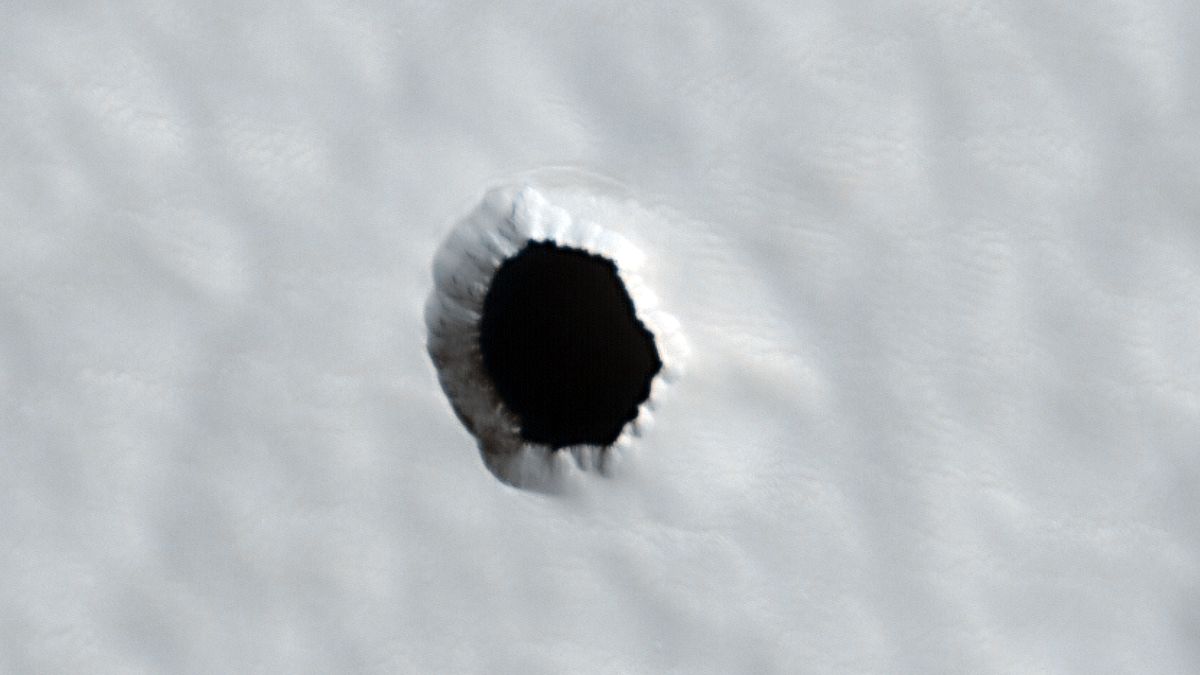 Reference: See here
Reference: See hereIn The News:
• NASA's Perseverance rover discovers evidence of ancient lake on Mars (Scientific American) • Mars exploration: NASA's Curiosity rover finds evidence of snowfall on the Red Planet (The Verge) • Europe's Schiaparelli lander crashes on Mars, but was it a successful failure? (BBC News) • Mars 2020: NASA's Perseverance rover finds promising signs of past ⁘⁘⁘ on the Red Planet (The Guardian) • Scientists detect signs of water on Mars... paving the way for human exploration (The Independent) • NASA's Mars Reconnaissance Orbiter captures stunning images of the Red Planet's tallest volcano (Space. com) • Mars 2020: NASA's Perseverance rover discovers organic molecules on the Red Planet (CNN) • JPL's Mars Odyssey spacecraft celebrates 20 years of exploring the Red Planet (NASA)A mysterious pit on the flank of an ancient volcano on Mars has generated excitement recently because of what it could reveal beneath the surface of the Red Planet. Here's what that means.
First things first, the pit, which is only a few meters across, was actually imaged on Aug. 15, 2022 by NASA's Mars Reconnaissance Orbiter , which was about 159 miles (256 kilometers) above the Martian surface at the time. This hole in the ground is also not alone. It's one of many seen on the flanks of a trio of large volcanoes in the Tharsis region of Mars. This particular pit is found on a lava flow on the extinct volcano Arsia Mons, and appears to be a vertical shaft. That raises a question: Is it just a narrow pit, or does it lead to a much larger and remarkable cavern? Or, could it perhaps be a really deep lava tube formed underground long ago when the volcano was still active?
Related: NASA's Mars sample return mission is in trouble. Could a single SLS megarocket be the answer?
There are several reasons why pits and caves on Mars are of interest. For one, they could provide shelter for astronauts in the future; because Mars has a thin atmosphere and lacks a global magnetic field, it cannot ward off radiation from space the way that Earth does. Consequently, radiation exposure on the Martian surface averages between 40 and 50 times greater than on Earth.
The presence of these so-called holes on the flanks of volcanoes is a big clue that they are probably connected to volcanic activity on Mars. Channels of lava can flow away from a volcano underground; when the volcano grows extinct, the channel empties. That leaves behind a long, underground tube. We see such tubes not only on Mars, but also on the moon and on Earth.
However, pits on the moon have been shown to have boulder-strewn floors that appear as though they could lead to a larger subterranean volume.
No comments:
Post a Comment